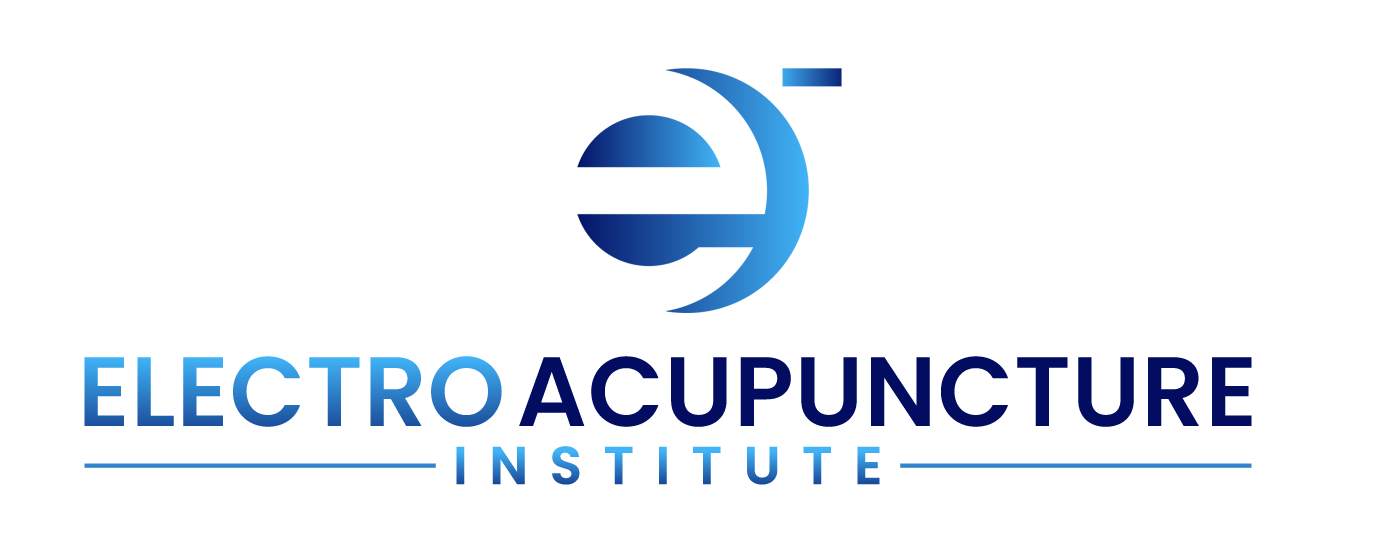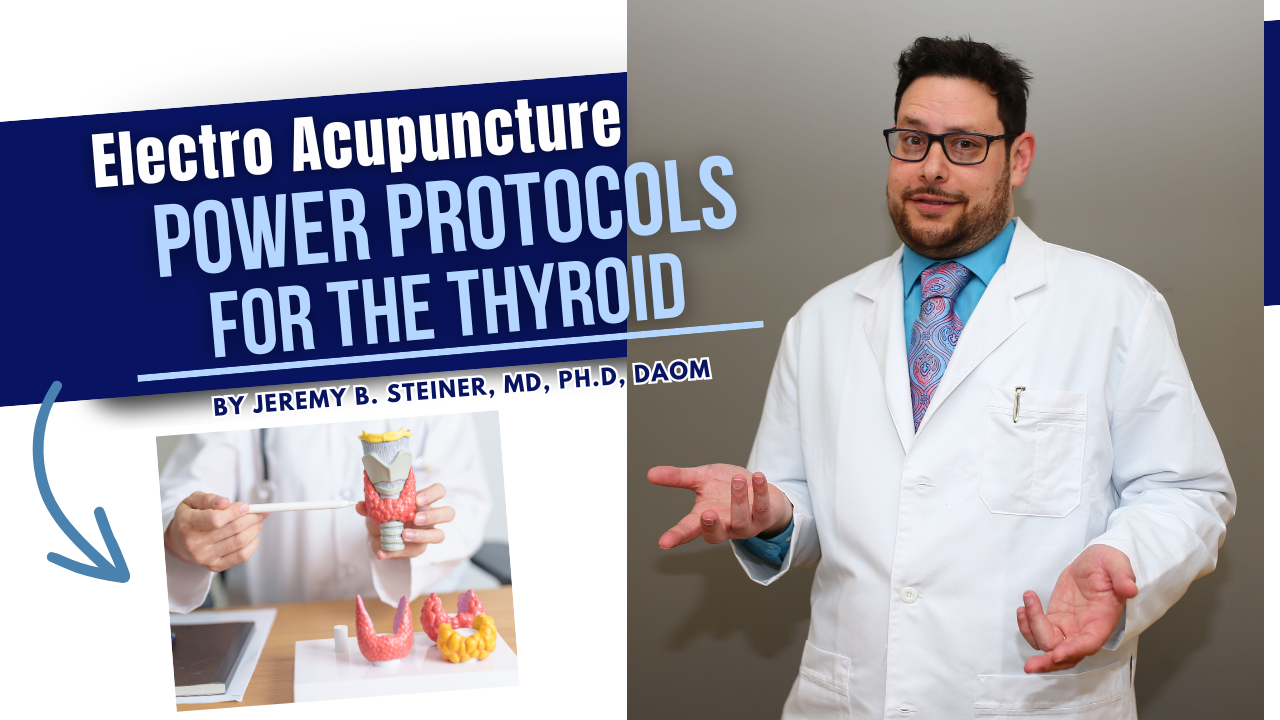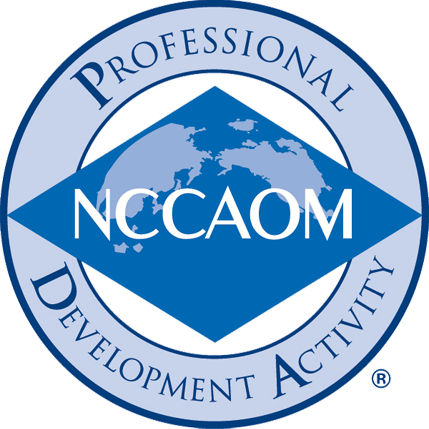ElectroAcupuncture Power Protocols For The Thyroid
Be sure to check out this short video from one of my recent workshops, where I dive into the ElectroAcupuncture Power Protocols for the Thyroid. You’ll learn essential techniques to stimulate thyroid function, balance the autonomic nervous system, and harness the energy flow of specific channels to support patient health effectively.
Don’t forget to download our free guide, “FREE RESOURCE- ElectroAcupuncture Power Protocols For The Thyroid”, packed with insights on targeted electroacupuncture points and protocols for optimizing thyroid health.
Ready to take your thyroid treatment approach to the next level? Let’s dive in!
Introduction: Why Thyroid Health Matters for Acupuncturists
The thyroid gland is a vital regulator of body temperature, metabolism, and overall health. Supporting thyroid function through acupuncture, specifically targeting certain channels and using electroacupuncture, can yield transformative results for patients experiencing thyroid imbalances. In this blog, we’ll explore root and branch treatments for both hypothyroid and hyperthyroid conditions, the role of iodine, and how balancing specific acupuncture channels and nerves can help restore thyroid health.
Root Treatments for Hypothyroidism
In cases of hypothyroidism, it’s essential to focus on treatments that address both the stomach (ST) and spleen (SP) channels. These earth channels feed energy directly to the thyroid gland, which relies on adequate energy flow for hormone production. When these channels are depleted, thyroid function can suffer, leading to symptoms like fatigue, low body temperature, and slowed metabolism.
- Charging the ST and SP Channels: To restore energy to the thyroid, begin by charging the ST and SP channels with electroacupuncture. By placing an electric current on points early or later along the channels that feed into the thyroid, you can boost energy flow and support the gland’s function. This approach targets the root of hypothyroid issues by nourishing the thyroid with balanced earth energy.
- Balancing the Autonomic Nervous System (TE and PC Channels): The thyroid is also influenced by the autonomic nervous system, which is represented by the triple energizer (TE) and pericardium (PC) channels. Known as the fire channels, these pathways help manage stress response and autonomic balance. Electroacupuncture applied to these channels can fill and balance fire energy, which, in turn, supports a stable autonomic nervous system—essential for optimal thyroid function.
Branch Treatments for Hypothyroidism: Targeting ST9
In addition to balancing the primary channels, ST9 is an effective branch point for thyroid stimulation. ST9 is located near the cervical vagus nerve, a parasympathetic nerve that directly influences the thyroid. When stimulated with electroacupuncture, this point can promote thyroid hormone production, provided the patient has sufficient iodine and other raw building blocks in circulation.
- Locating the Point: Find ST9 halfway between the Adam’s apple and the medial border of the SCM muscle. Move 1/4 cun superior and 1/4 cun medial to stimulate the superior laryngeal nerve, a branch of the vagus nerve that innervates the thyroid.
- Application: Use a small electric current at this modified ST9 location to stimulate thyroid hormone production. Note: Avoid using this treatment in cases of hyperthyroidism, as it could exacerbate the condition by further increasing hormone production.
By combining these root and branch treatments, you can offer a comprehensive protocol for hypothyroidism that addresses both the channel and nerve aspects of thyroid health.
Supporting Thyroid Health with Iodine
Iodine is essential for thyroid hormone production and plays a critical role in overall endocrine function. An iodine deficiency can lead to hypothyroidism, ADD, ADHD, and poor brain function. Iodine is necessary not only for the thyroid but also for other glands, including the salivary glands, breasts, skin, prostate, and ovaries.
Patients with low iodine often experience a range of symptoms, including dry skin, fatigue, and low energy. Supplementing iodine at 12.5 mg daily, with appropriate cofactors like selenium, can support the thyroid’s ability to produce hormones and boost metabolic health.
Hyperthyroidism Treatment Protocols
For patients with hyperthyroidism, the treatment approach is different. Hyperthyroidism involves excessive thyroid hormone production, which can lead to symptoms like anxiety, weight loss, and increased heart rate. In these cases, the goal is to reduce thyroid stimulation rather than enhance it.
- Channel Charging for Hyperthyroidism: While the ST and SP channels are still essential for thyroid health, in hyperthyroidism, focus on gently stimulating these channels without using strong currents. By stabilizing these channels, you help bring the thyroid back into balance without further increasing hormone production.
- Sympathetic Nerve Stimulation at T1: The T1 vertebrae contains sympathetic spinal nerves that connect directly to the thyroid. In hyperthyroid cases, gently stimulating this nerve for under 12 minutes can activate the sympathetic response, which works to suppress thyroid activity. This protocol should be applied carefully to avoid overstimulation, which could have unintended effects.
- Application: For hyperthyroid patients, stimulating the T1 nerve for less than 12 minutes helps reduce thyroid hormone production. Be mindful to limit stimulation time, as overdoing it can lead to excessive suppression of thyroid activity.
Through these approaches, you can manage hyperthyroid symptoms by moderating both the channel energy feeding the thyroid and the nerve pathways that influence thyroid output.
Acupuncture and Electroacupuncture for Nervous System Support
Using electroacupuncture to target nerve activity is highly effective in enhancing thyroid function for hypothyroid patients and managing excessive activity in hyperthyroid cases. For hypothyroidism, stimulating the superior laryngeal nerve at ST9 promotes acetylcholine release, which supports thyroid hormone production. For hyperthyroidism, brief stimulation at T1 helps balance hormone levels.
The TE and PC channels are also crucial in managing the autonomic nervous system, which influences the stress response and can impact the thyroid. By balancing these channels with electroacupuncture, you support a healthy autonomic nervous system, helping your patients regulate stress and achieve a more balanced thyroid function.
Environmental Factors: Fluoride, Radiation, and Toxins
Environmental factors such as fluoride, radiation, and chlorine also impact thyroid function by competing with iodine. For instance, fluoride, commonly found in tap water, displaces iodine and creates a “fake” thyroid hormone that standard tests often miss.
Educate patients on the importance of avoiding fluoride and chlorinated water, which may displace iodine and impact thyroid health. Recommending iodine supplementation is an effective way to counteract these environmental exposures, and 12.5 mg of iodine daily is a good starting point for most adults. Adding selenium as a cofactor is also beneficial, as it supports safe iodine metabolism and prevents complications like Hashimoto’s disease.
Symptoms of Thyroid Imbalance
Symptoms of thyroid imbalance include fatigue, low energy, brain fog, memory issues, and difficulties with body temperature regulation. Patients with iodine deficiency often experience dry skin, brittle hair, and weakened immune function. Recognizing these symptoms can help you identify potential thyroid issues and offer targeted support to alleviate these concerns.
Conclusion: Integrating Acupuncture, Electroacupuncture, and Iodine Support for Thyroid Health
Supporting thyroid health as an acupuncturist involves understanding the complex relationship between the nervous system, specific channels, and nutritional needs like iodine. By focusing on essential channels such as ST/SP and TE/PC, and utilizing electroacupuncture to stimulate the superior laryngeal nerve for hypothyroid patients or T1 for hyperthyroid cases, practitioners can promote healthier thyroid function and support balanced hormone levels.
Integrating electroacupuncture, nerve stimulation, and iodine supplementation offers a comprehensive approach to thyroid health, helping patients experience lasting improvements in energy, focus, and metabolic function.
For further information and advanced techniques, explore our free resources and guide your patients toward optimal thyroid function and holistic well-being. visit our website ww.electroacupunctureinstitute.com
Remember to download our guide, “Power Protocols for the Thyroid”
Peace and Bliss,
Jeremy Steiner, PhD. MD, DAOM





